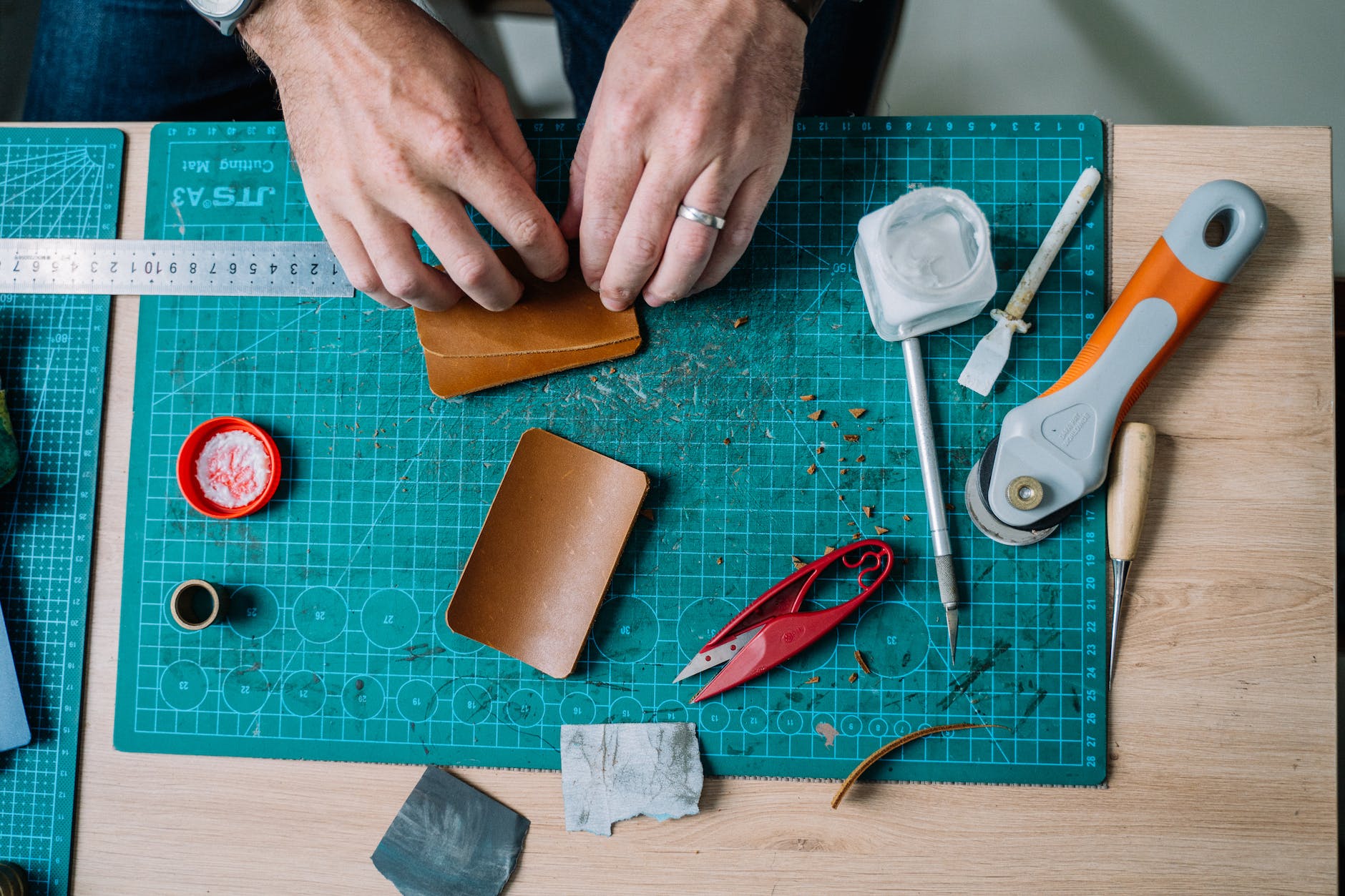The Art of Leatherworking: Exploring Timeless Craftsmanship
The Rich History of Leather in Human Culture
For thousands of years across cultures worldwide, leather has been one of humanity’s most versatile and valuable materials. Hides and skins provide durable, flexible covering for clothing, shelter, storage, armor, footwear, and more.
Archaeological evidence shows leatherworking emerged at least 5,000 years ago. Prehistoric peoples tanned hides to create protective clothing and accessories. Leather’s water resistance and strength made it invaluable for survival needs.
Over centuries, leather crafting evolved into a skilled art form. Artisans perfected specialized techniques like embossing, tooling, gilding and pleating to create status symbols and works of luxury. The material took center stage far beyond just practical use.
Despite modern innovations in textiles, leather retains unique appeal and craft heritage. When worked by hand, it still achieves singular beauty and character unmatched by any synthetic.
Common Leather Types Used in Crafting
Leather derives from the skins of various animals, with differing properties suitable for particular uses. Most common sources include:
- Cowhide – Very durable and stiff. Ideal for shoes, bags, belts.
- Deerskin – Soft and flexible. Used for gloves, jackets.
- Sheepskin – Water resistant and insulating. Used for cold weather gear.
- Goatskin – Thin and supple. Popular for fine gloves and garments.
- Pigskin – Hard wearing and weatherproof. Used for saddles and armor.
- Kangaroo leather – Ultra lightweight and abrasion resistant. Ideal for footwear.
Exotic leathers like alligator, ostrich, and stingray also get used for accessories and accents. Leather can be dressed in many ways to alter texture.
Implementing Quality Hand Crafting Techniques
Leatherworking relies on specialized tools and techniques developed over generations. Key skills include:
Cutting – Using extremely sharp blades to cut patterns precisely. Cutting orientation impacts stretch.
Skiving – Thinning edges to allow folding and reduce bulk at seams. Elongates leather lifespan.
Stamping – Using metal tools struck with a mallet to imprint decorative designs.
Tooling – Incising surface with swivel and beveler knives to create patterns and textures in the leather.
Lacing – Stitching leather through slits instead of holes for flexible joining. Requires great accuracy.
These foundational techniques demand extensive practice to master. Their nuances empower leatherworkers to shape and embellish durable leather goods with refined artistry.
Achieving Mastery Through Long-Term Practice
Developing true mastery in leathercraft requires dedicated long-term practice to build hand skills and design instincts. Yet the journey proves deeply rewarding.
Early crude attempts will seem humorous looking back after abilities improve. But each piece marks progress. Finding personal style takes experimentation.
Years spent honing technique open creative possibilities as hands gain competence. Problem solving teaches insight. Discerning eyes appreciate the leather’s organic essence.
Pushing through plateaus tests perseverance, yet breakthroughs into new realms of skill rekindle passion. Decades impart nuanced wisdom impossible to rush. Slow devotion yields lasting excellence.
Studying Traditional Motifs and Design Elements
Learning the history and meanings behind traditional leatherworking motifs provides inspiration and context for contemporary works. Themes carry on cultural connections.
For instance, Celtic knots reference eternity and interconnectedness. Mexican floral tooling celebrates natural bounty. Dragon designs show power and wisdom in Asian leathercraft. Geometric patterns embody order and symmetry.
While allowing free artistic expression, heritage motifs infuse meaning and continuity into new pieces. The designs summon ancestral knowledge that enriches leather craftsmanship across generations.
Custom Designs Created Through Client Collaboration
Commissioning custom leather goods offers clients the chance to collaborate with artisans to create unique meaningful pieces tailored to their needs and tastes.
The maker discusses desired style, use cases, personalization options and budget to design complementary and functional products the client will cherish.
Mockups and ongoing communication allow perfecting details and color choices. Makers guide clients in selecting materials and finishes suited to the product’s purpose.
Through collaborative craftsmanship, beautiful bespoke leather pieces come to life, infused with the maker’s skill and client’s vision to achieve gifts of lasting significance.
Techniques for Edge Finishing and Burnishing
Quality edge finishing gives leather goods polish while preventing moisture damage. Burnishing and staining create clean integrated looks.
Edge paints and gums saturate exposed cut leather edges to seal out water. Flexible cog handles allow friction polishing to sheen.
Stains blend edges into hues complementing leather faces for minimal distraction. Masking achieves ombre gradients. Sealer waxes add protection.
The extra effort of meticulous edging makes projects stand out through masterful attention to detail. Patience creates perfect invisible joins.
Promoting Ethical and Sustainable Sourcing
Many leatherworkers aim to source materials as ethically and sustainably as possible. This benefits animals, people, and environment.
Seeking skins from meat industry byproducts reduces waste. Certified tanneries utilize non-toxic processes. Vegetal tanning options avoid toxins.
Buying quality local leather eliminates shipping and supports small farmers. Senior artisans training apprentices sustains generational craft.
Consumers demanding ethical sourcing encourage reform. Grants developing sustainable practices improve lives globally. Consideration uplifts the medium.
The Satisfaction of Preserving Ancient Skills
Engaging with traditional leatherworking renews appreciation for ancestral resourcefulness and skill vital to past societies’ flourishing. The craft bonds eras.
Natural material mindfulness guides hands as did primitive ancestors’. Items get meticulously created to serve enduringly. Intensive time investment rings meaning.
Studying original techniques awakens wonder at how our forbearers crafted, decorated, and repaired essential items solely by hand. Their artistry humbles modern assumptions of progress. Long-lost methods still speak through rediscovered leathers.
Today’s leather artisans shoulder the profound responsibility of transmitting irreplaceable generational knowledge through practice. Our distant progeny may yet decipher something invaluable in what we leave behind, well crafted.
The beautiful flexibility and durability of leather continues to inspire artisans old and new. Despite technological advances, certain essential qualities imparted by the human hand remain unmatched. Master leatherworkers coax breathtaking functionality and art from this ancient medium through time-honored tools and consideration, transcending fads. Their well-worn hands link past present and future.
